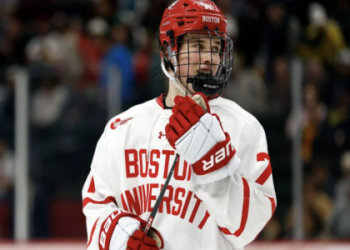So, I’ve been hearing Artem Shliaine’s name pop up a bit more in hockey conversations, and it got me thinking. Not just, you know, “is this guy any good?” but really how he plays the game. I decided to turn it into a little personal project, a sort of practice in really watching and understanding a player’s style.
Getting Hold of the Material
First off, I needed to actually get my hands on some decent game footage. I wasn’t just looking for the highlight-reel goals, though those are always fun to see. I wanted to see the regular shifts, the plays that don’t always make the shiny packages. I spent a fair bit of time searching around, looking through different archives and fan uploads. You’d be surprised what you can track down if you’re willing to dig a little.
Once I had a good collection of games, the next step was figuring out how I was going to watch and take notes. Nothing too high-tech, mind you. Just me, the screen, and an old-fashioned notebook. I’d often rewind plays, watching them again and again. My wife probably thought I was losing it, staring so intently at the same few seconds of ice time repeatedly.
What I Was Actually Looking For
Now, I wasn’t setting out to become a professional scout overnight. My goal was simpler: to get a better feel for Shliaine’s approach to hockey. I decided to zero in on a few key areas:
- His skating ability: How does he move around the ice? Is he all about raw speed, or more about agility and using his edges? Or maybe he’s just really efficient with his strides.
- How he handles the puck: Is he a flashy stickhandler, trying to deke everyone out? Or is his game more about protecting the puck and making smart, simple passes?
- His hockey sense: What does he do when he doesn’t have the puck? Where does he position himself? How does he react when the pressure is on?
This was where the real “practice” came in. It’s one thing to just have a game on in the background, but it’s totally different when you’re actively trying to spot these specific things. Sometimes it was pretty clear, but other times I’d watch an entire period and my main note would be something like, “seemed to be in good spots.” Not exactly earth-shattering insights at the start!
The Little Things and What I Noticed
After a while, what started to jump out at me wasn’t always the most spectacular plays. Sure, he can make a nifty move or a nice pass. But what really caught my eye was his consistency in some of the less glamorous parts of the game. For example, I noticed his positioning in his own end was often quite responsible. That’s not the kind of stuff that gets you on the evening sports shows, but it’s hugely important for a team.
Another thing I started to pick up on was his knack for finding a bit of open ice just as a pass was coming his way. It’s subtle, you know? You really have to watch him before he gets the puck to see it. A lot of players just follow the puck around, but he often seemed to have a good read on where the play was developing and where the space would be.
And to be honest, sometimes what I ended up “recording” in my notes was just how hard he competed on a particular shift. Getting stuck in along the boards, finishing his checks (when it made sense, of course). That level of effort, shift in and shift out, that’s a skill in itself, I reckon.
My notes are far from a pro scouting document. They’re more like a collection of “huh, that’s interesting” moments. I’d jot down timestamps where he made a clever little chip out of the zone, or how he supported his teammates on a breakout. It’s often those small, almost unnoticeable details that really tell you about a player.
Wrapping Up This Little Observation Exercise
So, what did I learn from all this watching and note-taking? Well, I definitely have a much clearer picture of what Artem Shliaine brings to the rink. But more than that, this whole exercise was a great reminder of just how much is going on during a hockey game that you can easily miss if you’re not paying close attention. It’s not all about the goals and the big saves. It’s about the little positional plays, the smart decisions, the quiet contributions. This little “practice session” of mine has genuinely made watching hockey – any hockey, really – a bit more engaging for me. And that, I think, is a pretty good takeaway.














